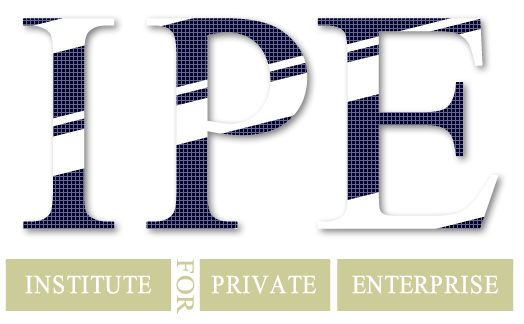Responding to Islamic Threat, Climate Change, Financing Budget Deficits
More Islamic Problems
I suggested yesterday that there has recently been a higher rate of violent activity from Islamic jihadists and that has been confirmed by reports today of an arrest of a man for supplying a weapon to the now dead Brighton jihadist and police questioning of others possibly involved. Today’s Australian has also published a range of material on jihadism, including the whole of its letters page on critiques of Islam and suggestions of what should be done about it.
With some “adjustments” by the Ed, my letter below is the lead letter and refers to a welcome statement by Turnbull in a radio interview that Islamist terrorism actually seeks to destroy from within the Islamic religion. If Turnbull sticks to that sourcing it would be a major improvement in assessing the real problem. As it happens, the Australian Strategic Policy Institute (of which I was a board member) has an article in similar vein by senior analyst Anthony Bergin drawing attention to the Turnbull quote reiterated in my letter (see Bergin on Islam). Bergin also praises Turnbull government Assistant Minister for Multi-Cultural Affairs Seselja as being “absolutely right that too many public figures have been walking on eggshells and becoming hostage to political correctness in failing to state publicly the underlying cause and motivation of terrorism”. I have previously urged Bergin to use ASPI more as a means of drawing attention to the Islamic problem (ASPI was established with the agreement of both major political parties as “an independent, non-partisan think tank that produces expert and timely advice for Australia’s strategic and defence leaders”).
The difficulties faced in confronting the problem of how to deal with Islam is illustrated by the proposal by the Islamic Council of Victoria that “safe spaces”be established where young Muslims could make ”inflammatory”comments and criticize control orders against terror suspects (see Vic Islamic Council)! It has also indicated that it is withdrawing from a deradicalisation program because it refuses to work alongside Victorian police. Fortunately, Victorian Premier Andrews has immediately rejected the “safe spaces”proposal by saying the“there is no way to rail against the West. There is no safe way to rail against the values we hold dear”. But note that the Victorian government currently provides funds to the Council – for how much longer?
A similar question arises with regard to State funding of schools largely attended by Muslim children and where radicalisation appears to occur (see Funding Education of Muslim Students).
COAG should face the Islamist terror challenge (Lead Letter published in The Australian, 9 June 2017. Square brackets show bits deleted by Ed).
[When] Malcolm Turnbull [was interviewed yesterday he told 3AW that] says ““we are facing a global threat, this Islamist terrorism. It is a disease and it is corrupting, seeking to destroy from within the Islamic religion [and of course,] lashing out to destroy and undermine our way of life”. We also learn that Victoria alone has 3000 on a watch list. On the same day an [expert] Italian analyst wrote there are 66,000 official extremists in four major European countries and “a jihadist takeover of Europe is no longer unthinkable”.
One hopes that tomorrow’s meeting of Australia’s [political] leaders are [, as your editorial says,] “seized with the challenge of the moment” [which is in fact] – a serious challenge to the survival of Western values. But our leaders performance so far is abysmal.
[At a minimum,] COAG should conclude [that the Prime Minister should prioritise the construction of a major] with a statement identifying the characteristics of Islam that are unacceptable (such as sharia) and outlining the [major] measures to be taken to minimise the threat [which we and other Western countries] we face from Islam. These should include changes to human rights [which, as the British PM promises,] legislation that might otherwise hinder the control of Islamic extremists.
Des Moore, South Yarra, Vic
Climate Change
It is premature to comment on what has emerged on Climate Change Policy at COAG today. But I draw attention to the “Socrates” advertisement in today’s Australian by the Climate Study Group led by Richard Morgan (see Socrates). Not surprisingly, the wise old man convinces “Mr Smith” that CO2 is not the problem.
Note also that Tony Abbott has said that it is important that coal continues to provide an important source of energy in any arrangement. If some form of agreement emerges at COAG on reducing usage of coal but without having electricity price rises, that can only mean that governments will have to provide even more subsidies than the enormous ones already in government budgets. It would also be likely to add to opposition to Turnbull within the Coalition.
Financing Budget Deficits
Attached is an important article by Prof Tony Makin arguing that, when assessing government budgets, regard has to be paid not simply to the financing of any deficit from this year’s result but to the financing of deficits from results in previous years (see Makin on Financing Deficits). He points out that “Australia’s total budgetary financing need in recent years, inclusive of short-term debt falling due for repayment, has significantly exceeded actual budget deficits…. Whereas Australia’s budget deficit in 2017 on a calendar year basis was 2.4 per cent of gross domestic product, IMF estimates show the total government financing need, including maturing debt, was 3.2 per cent. A 3.6 per cent of GDP financing need is predicted for next year, almost three times higher than the budget deficit as a proportion of GDP”.
Makin argues that the additional financing from previous deficits in effect reduces the funding available for private investment and, over time, this will slow down economic growth. It would be interesting to know whether this analysis has been made available to the government and whether Credit Rating Agencies take account of it in determining credit ratings









